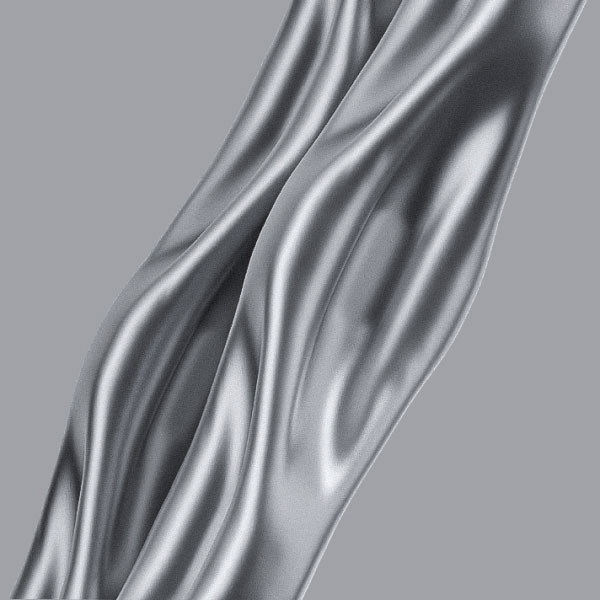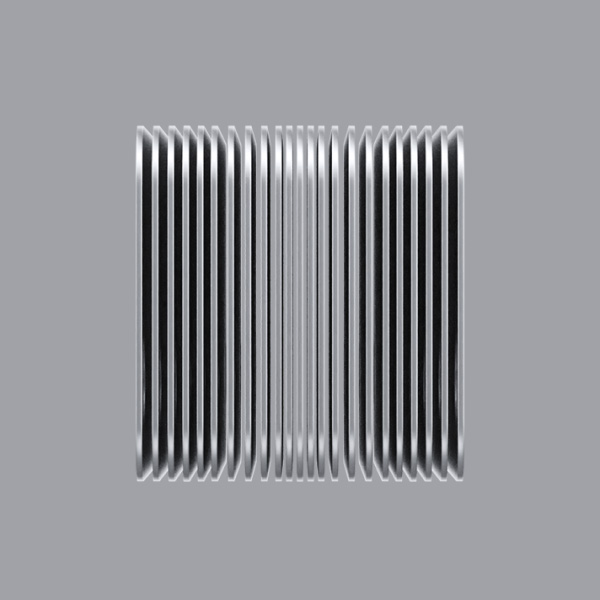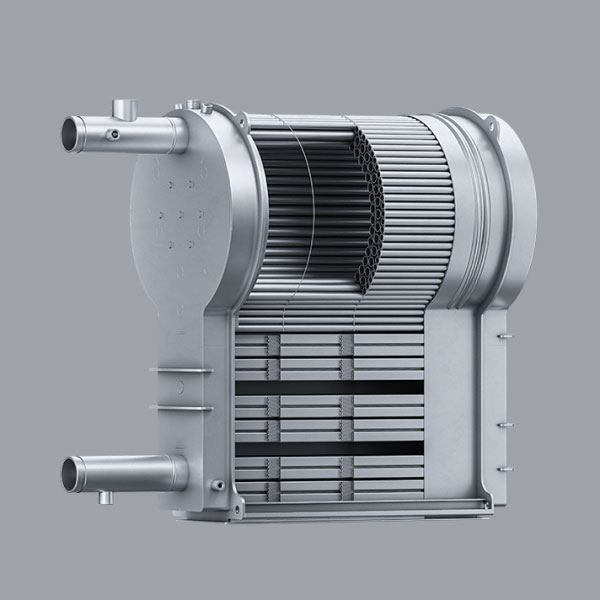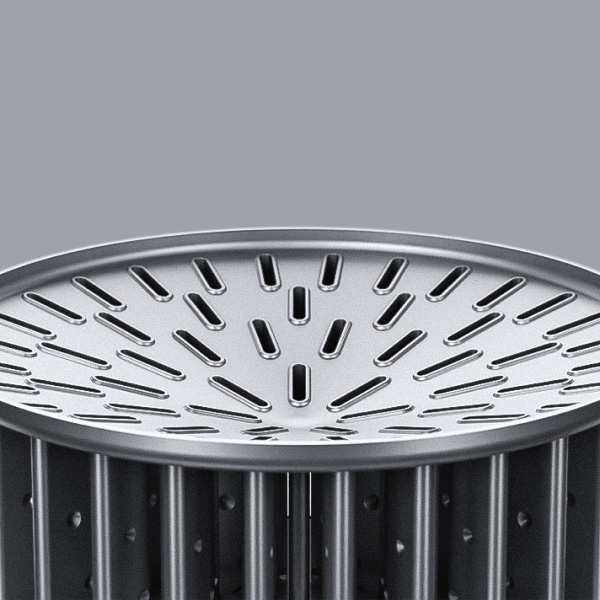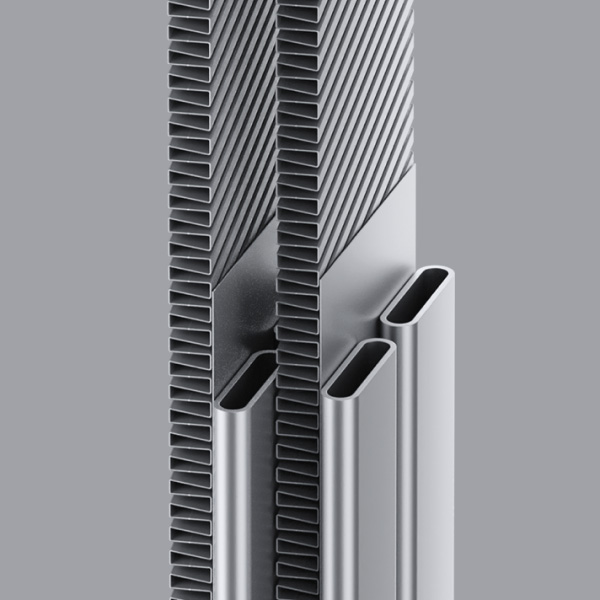Fire Tube
Heat exchangers, in which heat is transferred from hot gases passing through the tubes to the cold water in the shell.
Fire tube designs are frequently applied in condensing boilers due to their multiple advantages: durability, ease of cleaning and maintenance, small footprint, lightweight construction, large heat transfer area and low pressure drops.
Overview
High-efficiency heat exchangers, in which heat is transferred from hot gases passing through the tubes to the cold water in the shell.
A fire tube heat exchanger consists of a tube packet inside a shell. The exhaust gases flow through the tubes, while the boiler water flows around the tubes, in the shell.
The heat of the gases is transferred through the walls of the tubes by thermal conduction, which depends on the material properties and the temperature difference between the gases and water.
In a typical fire tube heat exchanger, the exhaust gases enter the device at one end, flow through the tubes, and exit at the other end. The water enters the exchanger on the opposite side of the gases and flows in a countercurrent direction through the shell.
Due to their advantages, fire tubes are widely used in various applications, especially in condensing boilers, ranging from small residential installations to large commercial and industrial devices.
Advantages
Fire tube exchangers offer several major advantages, foremost greater resistance to gas and water quality issues, which makes them in high demand for various applications.
High efficiency
Tubes are dimpled, which provides a turbulent flow and increases the heat transfer area.
Easy to clean
The tubes are spaced far apart, which makes it easy for any impurities to be removed with condensate and to access and clean the inside of the tubes during the maintenance process, if necessary.
Large temperature differences
Fire tube heat exchangers can handle large temperature differences between the hot and cold fluids.
Versatility
Fire tube heat exchangers can be used to transfer heat between a wide range of fluids, including gases, liquids, and steam.
Small footprint
Fire tubes have a relatively small footprint at lower outputs for residential and light commercial applications.
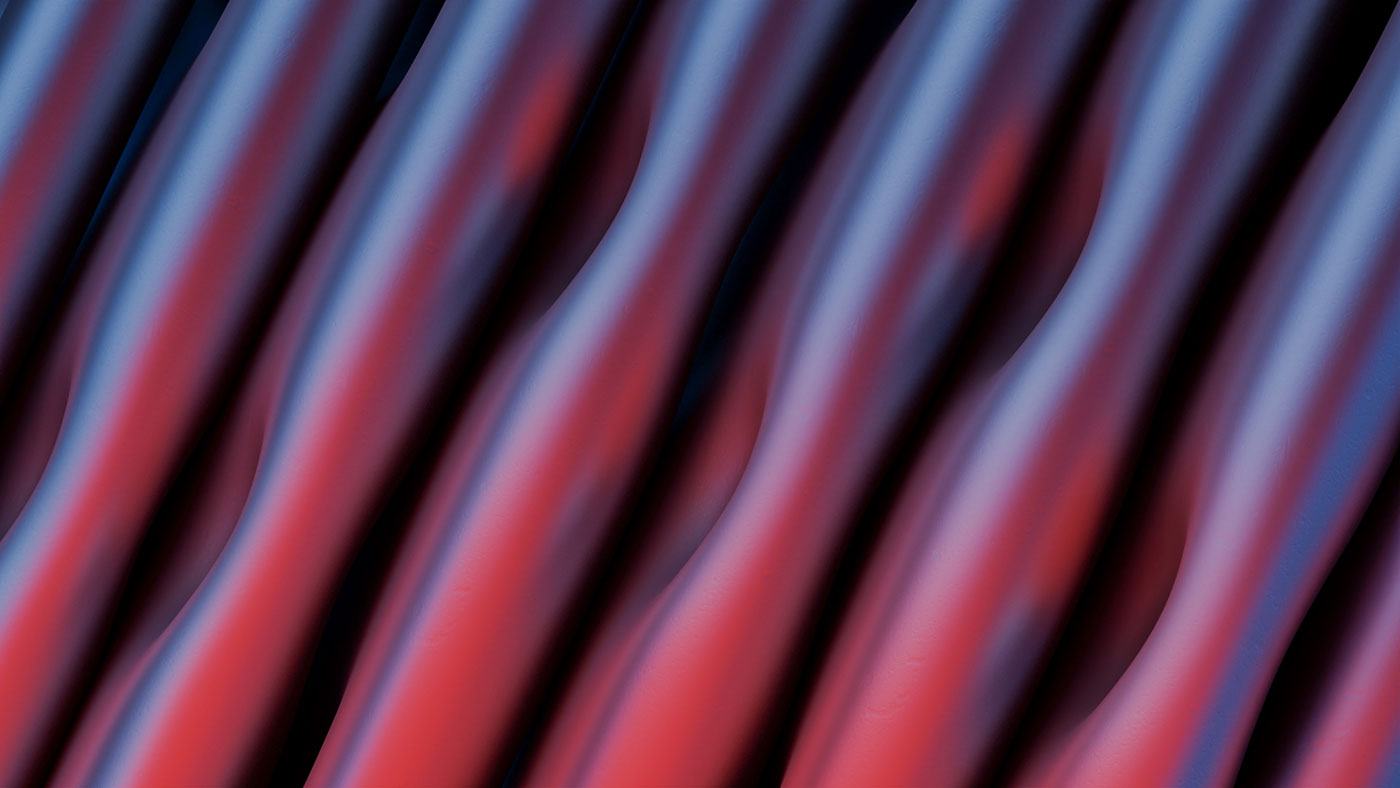
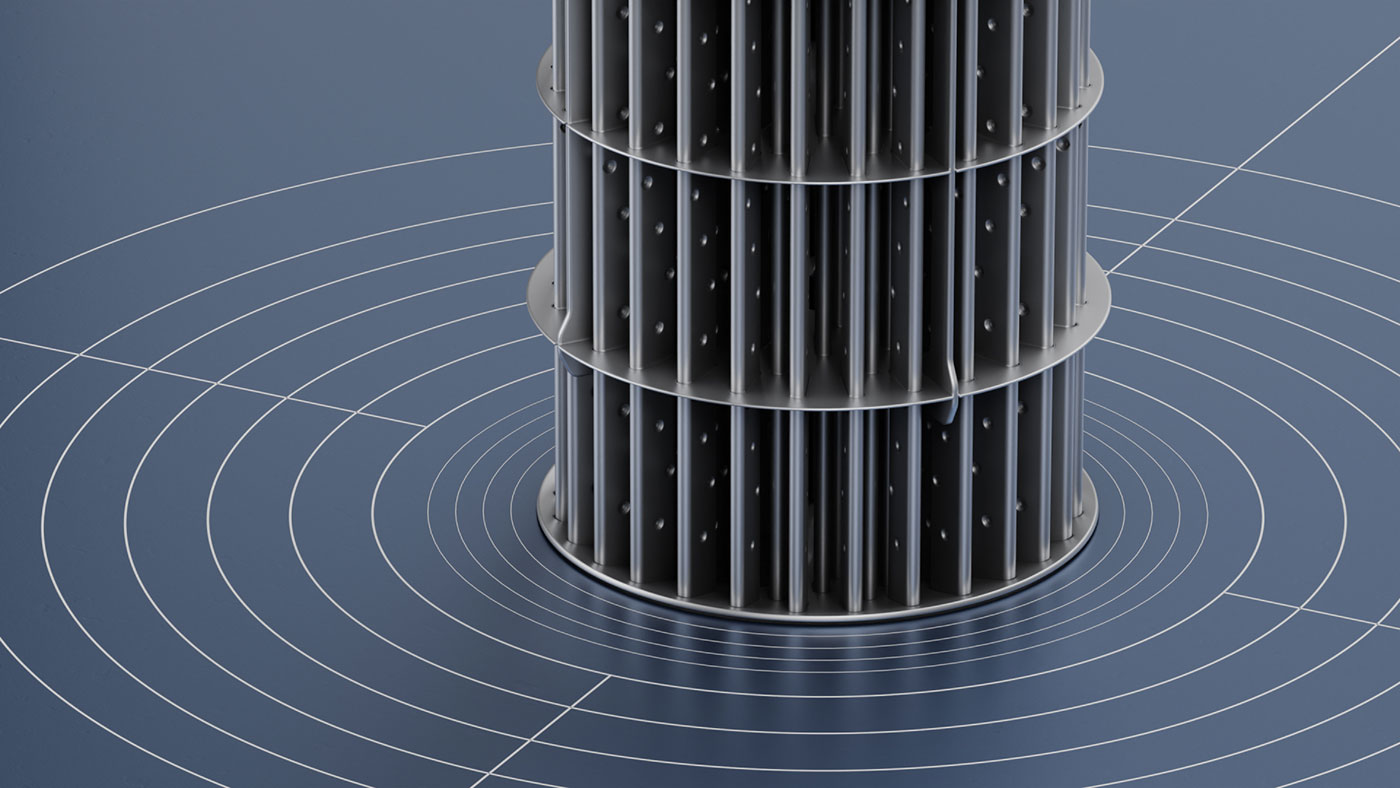
Fire tube designs at AIC
AIC holds the top position in the HVAC market by offering a complete portfolio of fire tube heat exchangers, ranging from 16kW to 2MW units.
We understand that a fire tube heat exchanger design needs a different approach to operate efficiently, depending on the power output range. Therefore, we developed our four main fire tube product families: VC, PG, PGT and Ventura, which offer a complete market range of 16 kW to 2 MW.
The product families differ in construction and the type of tube used. Depending on the device's construction, we use different grades of stainless steel.
The production process has a significant impact on the longevity and reliability of the heat exchanger. We pay close attention to the tube-to-tube-sheet connection, continuously stressed by high temperatures during the condensing boiler operation. To ensure the reliability of those connections, we weld tube-to-tube-sheet joints using a high-precision method: laser welding.
The tubes are the most important part of the fire tube heat exchanger. They have the highest impact on the product’s performance. Sophisticated dimpling patterns of the tubes are developed internally (with the thorough evaluation delivered by CFD analysis), and then the in-house production of the tubes begins. The whole process, from a design to a serial production, is run and controlled by one team of engineers, enabling us to offer a complete range of optimized and reliable fire tube products to our customers.
